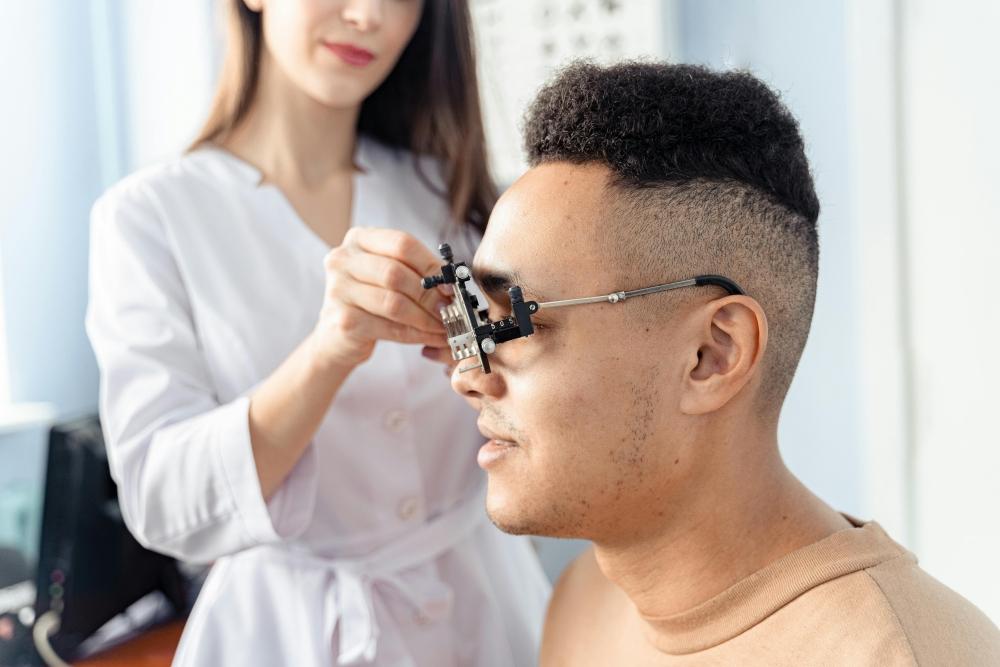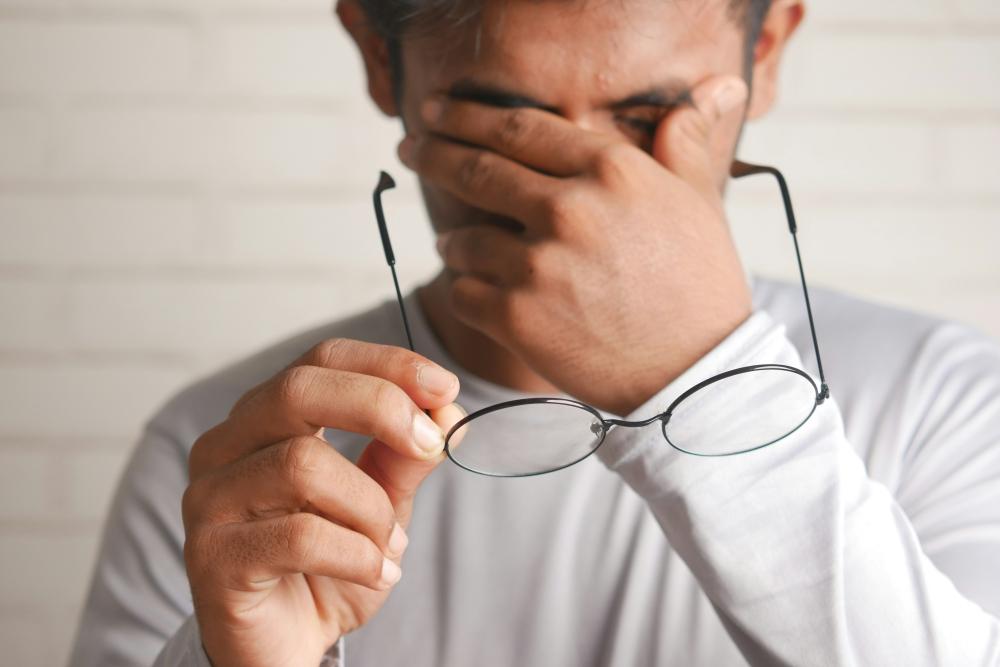In today’s world, it’s nearly impossible to escape the glow of digital screens. From smartphones and tablets to laptops and televisions, we spend countless hours staring at these devices. While they offer convenience and entertainment, prolonged screen time can affect our eye health.
Digital eye strain, a condition caused by prolonged screen use, has become increasingly common, affecting people of all ages. This article will explore the symptoms of eye strain and provide practical tips to protect your vision in this digital age.
Symptoms of Eye Strain
Ever wondered why does your eyes hurt when you blink? Well, digital eye strain can manifest in various ways, impacting both your vision and overall comfort. Some of the most common symptoms include:
- Eye fatigue and dryness: Your eyes may feel tired, sore, or gritty, especially after prolonged screen time. This is often accompanied by dryness and irritation due to reduced blinking.
- Blurred or double vision: Staring at a screen for extended periods can lead to temporary blurring or difficulty focusing. In some cases, you may experience double vision.
- Headaches and neck pain: Eye strain can trigger tension headaches, often located around the temples or forehead. You may also experience neck and shoulder pain from poor posture while using digital devices.
- Difficulty concentrating: When your eyes are strained, it can become challenging to focus on tasks, leading to decreased productivity and mental fatigue.
These symptoms may stem from several factors related to how we interact with digital screens. The constant focusing and refocusing on pixels, coupled with the glare and blue light emitted by screens, can strain the eye muscles and lead to discomfort. Additionally, reduced blinking while using screens can contribute to dry eyes, further exacerbating the problem.
Digital Eye Strain Prevention Tips
Fortunately, digital eye strain can be prevented and managed effectively with a few simple adjustments to your habits and environment. Here are some tips on how you can prevent digital eye strain:
- Embrace the 20-20-20 Rule: This simple yet helpful rule encourages you to take regular breaks from screen time. Every 20 minutes, look away from your screen and focus on an object at least 20 feet away for 20 seconds. This allows your eyes to relax and refocus, reducing the strain caused by prolonged near-vision tasks.
- Illuminate Your Workspace: Proper lighting is advisable for comfortable vision. Make sure your workspace has adequate lighting, ideally a mix of natural and artificial light. Avoid glare by positioning your screen away from windows or direct light sources. Consider using an anti-glare screen protector or adjusting your screen’s brightness and contrast to reduce eye strain.
- Optimise Your Screen Settings: Adjust your screen’s settings to minimise digital eye strain. Increase the font size to make reading easier and adjust the colour temperature to a warmer setting, especially in the evenings. Additionally, ensure your screen is clean and free of dust and fingerprints, as these can contribute to glare.
Healthy Habits
Beyond screen adjustments and mindful breaks, you can incorporate several other healthy practices into your routine to relieve eye strain in the digital age. Here’s how:
- Nourish your eyes from within: A well-balanced diet, rich in eye-friendly nutrients like lutein, zeaxanthin, vitamins A, C, and E, and omega-3 fatty acids can support optimal eye health. Include plenty of colourful fruits, vegetables, leafy greens, and oily fish in your meals. If you’re concerned about your dietary intake, consider consulting an ophthalmologist in Singapore to determine if supplements might be helpful for you.
- Eye exercises for relief: Simple eye exercises can help relieve eye strain and improve blood circulation to the eyes. Try these exercises a few times a day:
- Palming: Rub your palms together to warm them, then cup them gently over your closed eyes for a few minutes. The warmth and darkness can help soothe tired eyes.
- Blinking: Consciously blink more often to keep your eyes lubricated and prevent dryness.
- Focus shifting: Hold your finger a few inches from your face and focus on it. Then, slowly move your finger away and focus on an object in the distance. Repeat this several times to exercise your eye muscles.
- Protective eyewear: Consider using blue light glasses or screen filters to reduce your exposure to blue light emitted by digital screens. While the long-term effects of blue light are still being studied, some research suggests that it may contribute to eye strain and affect sleep quality.
Regular Check-ups

Even with the best preventive measures, it is advisable to prioritise regular eye exams, especially in today’s digital age. An eye check-up in Singapore at a reputable eye clinic allows an ophthalmologist to detect any early signs of eye problems, including those related to digital eye strain. Early detection and intervention are key to preserving your vision and ensuring optimal eye health.
When preparing for an eye exam, list any symptoms you’re experiencing, even if they seem minor. Inform your ophthalmologist about your screen time habits and any concerns you have about digital eye strain. During the exam, the doctor will assess your visual acuity, check for any signs of eye disease, and evaluate your eye muscle function. They may also use special instruments to examine the back of your eye and measure your eye pressure.
Protect Your Vision in a Digital World
In an era where screens dominate our daily lives, taking proactive steps to safeguard our eye health is more important than ever. By following the tips outlined in this article and incorporating healthy habits into your routine, you can minimise the risk of digital eye strain and its associated symptoms. Remember to take regular breaks from screen time, optimise your workspace, and prioritise a balanced diet rich in eye-friendly nutrients.
And perhaps most importantly, try not to neglect regular eye exams. Scheduling a comprehensive eye check-up in Singapore with an ophthalmologist is recommended for early detection and management of any eye problems that may arise. By taking a proactive approach to your eye health, you can enjoy clear vision and comfortable eyesight, even in a digital world.

